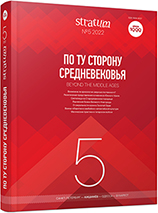Находки подвесок-ложек XI—XIII вв. на территории Древней Руси и Прибалтики
Spoon-shape Pendants of the 11th—13th Centuries in the Medieval Russian and Baltic Lands
Author(s): Valentina N. Kuznetsova, Vladislav Yu. Sobolev, Roberts SpirģisSubject(s): History, Archaeology, Ethnohistory, 6th to 12th Centuries
Published by: Издательский дом Stratum, Университет «Высшая антропологическая школа»
Keywords: Medieval Russian Land; Livonians; spoon pendants; Christianization; personal piety objects;
Summary/Abstract: The article deals with the spoon-shape-pendants typical for the culture of the ancient Russian population and Livonians. Items of similar appearance, with a long often ornately shaped handle and a not very deep scoop were found in settlements and burial grounds of the 11th—13th centuries, accidental finds are also known. In this article we analyzed over 100 finds. We have proposed a classification of the items based on technological and morphological features and have regarded place of the pendants in the costume. Spoon-shape pendants were found on a vast territory — from the Baltic to the Upper Volga region. The items were the attributes of both rural and urban inhabitants. According to the concentration of products both in the lands of the Smolensk Dnieper region and in the North-West of Russia we suppose that there were several centers of the production of such pendants. In the archaeological literature the spoon-shape pendants were regarded as the pagan amulets that had symbolized satiety, wealth and well-being. According to the late dating and widespread use in the Christian lands of Ancient Russia the spoon-shape pendants could serve as miniatures of Eucharistic spoons and could have been a symbol of the Orthodox rite of communion.
Journal: Stratum plus. Археология и культурная антропология
- Issue Year: 2022
- Issue No: 5
- Page Range: 145-162
- Page Count: 18
- Language: Russian
- Content File-PDF

